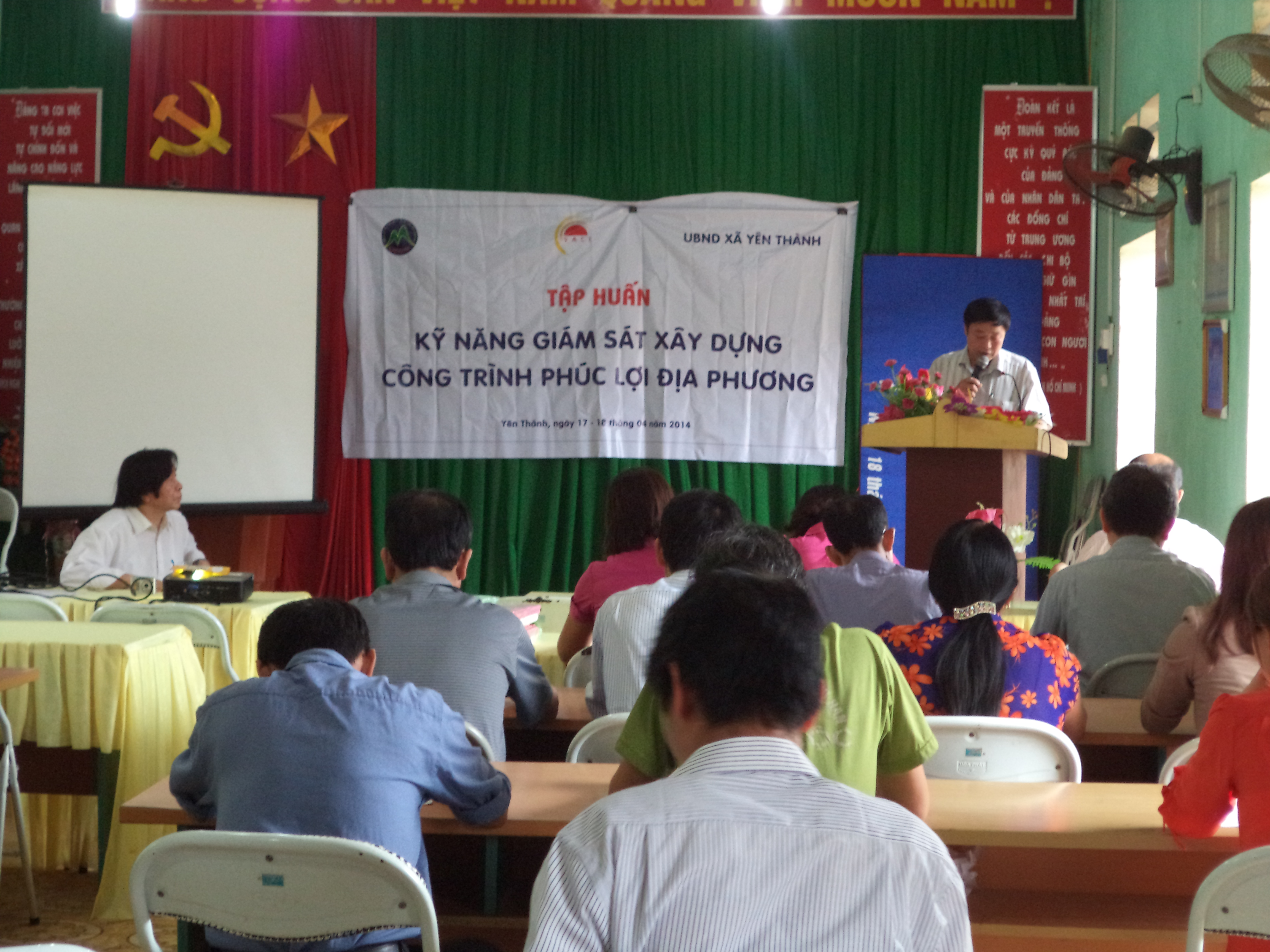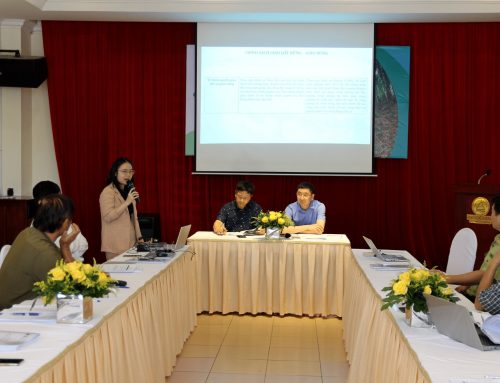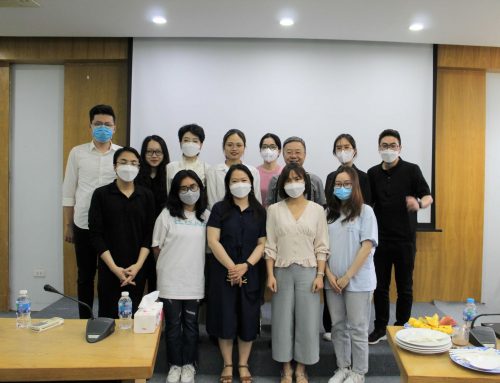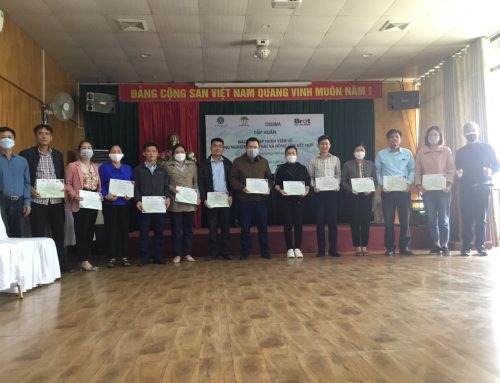On two days 17-18/04/2014, the Consultative Institute for Socio-Economic Development of Rural and Mountainous Areas (CISDOMA) organized the training “Monitoring the Planning of Public Facilities at local level” at Yen Thanh commune (Quang Binh district, Ha Giang province). This activity was a component of the Vietnam Anti-Corruption Initiatives (VACI) 2013 project “Replicating the pilot model of community participation in the planning of public facilities at local level” sponsored by World Bank in Vietnam.
The course was attended by representatives of eight hamlets in Yen Thanh commune, and Community Investment Monitoring Boards of 15 communes and hamlets in Quang Binh district; its trainer was Bui Khac Vu, an expert in Monitoring and Evaluation of Civil Society Inclusion in Food Security and Poverty Elimination Network (CIFPEN).
The training aimed at helping the participants:
- Thoroughly understand how to monitor and evaluate a public facility;
- Fully grasp the concept of participatory monitoring and evaluation/M&E (the benefits and the rights to monitoring and examining a public facility of the public; the challenges/difficulties faced by the public during the monitoring and evaluating process, and the methods to overcome these challenges/difficulties); and
- Acquire necessary skills and methods to effectively monitor and evaluate public facilities at the locality
During the course the following training methods were used: focus group discussion, sampling, and visual tools. These methods were effective in providing the participants with practical experiences and useful knowledge.
After two days, the participants understood the gist of public facility M&E, including: The concepts of monitoring, and project and public facility evaluation; The method of participatory M&E including people’s right to public facility M&E; Methods and skills to monitor and evaluate public facilities at local level; and Methods to develop public facility M&E plan and form. The participants also had opportunities to practice monitoring and evaluating public facilities using visual tool and sampling methods.
At the end of the course, all participants agreed that the most important outcome of this training was they had grasped basic indicators used in M&E, including quantitative and qualitative indicators. They had also acquired the skills of data collection, posing questions, observation, and writing an evaluation report. In addition, they were able to integrate the lessons taught into specific activities at their communities, such as the construction of the community hall and other public facilities.
A post-training survey showed that the participants felt satisfied with the content of the course and the training methods applied. Nguyen Tuan Hung from Quang Binh district’s Commission of Mass Mobilization said at the closing ceremony of the training that “Although it does not last long, this two-day training has brought us useful knowledge about monitoring and evaluating public facilities at local level. Quang Binh district is currently in the process of building a new countryside. Therefore, the training is needed for us and for the entire Quang Binh district. We sincerely thank Mr. Bui Khac Vu and CISDOMA for helping us thoroughly understand public facility M&E, which our cadres can bring into their activities. In particular, we will apply this knowledge to the pilot model which will be implemented in the near future.”
Hien – CISDOMA






